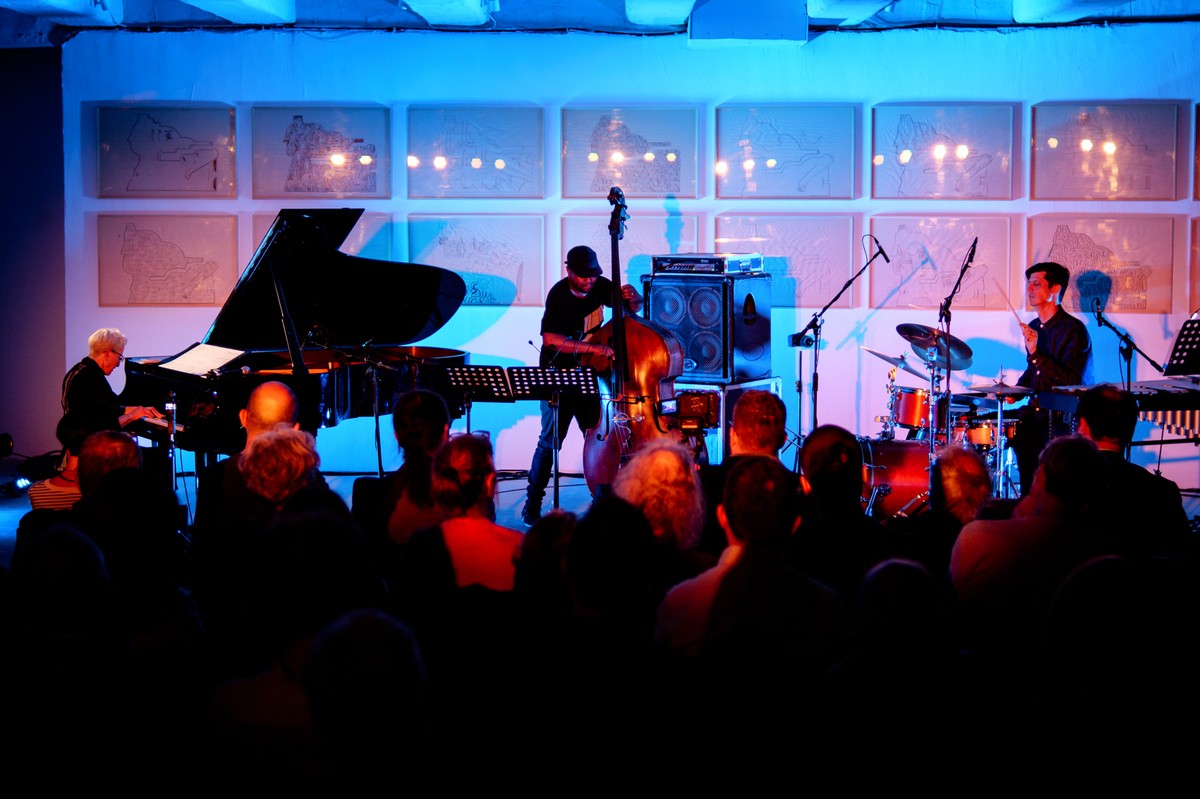
MYRA MELFORD'S SPLASH TRIO with Neil Charles and Ches Smith
Fondazione Nicola Del Roscio, Rome
(Artworks: Devendra Banhart, Sphinx Interiors, 2014. Courtesy the artist and Galleria Mazzoli)
Ph. Livio Sapio

MYRA MELFORD'S SPLASH TRIO with Neil Charles and Ches Smith
Fondazione Nicola Del Roscio, Rome
(Artworks: Devendra Banhart, Sphinx Interiors, 2014. Courtesy the artist and Galleria Mazzoli)
Ph. Livio Sapio
The project is the latest installment of Melford’s ongoing body of work inspired by and engaging with the work of Cy Twombly, entitled An Extravagant Joy (for Cy Twombly). The set features compositions in dialogue with Free Wheeler (1955), the Blackboard paintings (1966-1971), the cycle in 12 parts Lepanto (2001) and Untitled (2003), both in the Udo and Anette Brandhorst Collection.
Melford doesn’t attempt to directly translate Twombly’s work in sonic form; instead, she approaches her own musical language via techniques and processes using action words – “Splash” among them – to propel both compositions and improvisations, discovering means to capture the impression of spontaneity in concrete forms, and the energy and physicality of the gestures that made them.
Her dialogue with Twombly has evolved over nearly three decades, since she discovered the artist's work through his celebrated 1994 retrospective at New York’s Museum of Modern Art. Previous installments of the project include two albums with her all-star quintet Fire and Water (with Mary Halvorson, Ingrid Laubrock, Tomeka Reid and Lesley Mok) and a set of music for the collective trio MZM, which she co-leads with Miya Masaoka and Zeena Parkins.

Cy Twombly, Studio, Lexington, 2008
© Fondazione Nicola Del Roscio
DC (Delia Casadei) – I’d like to begin by reading you a famous passage in Marcel Proust’s In Search of Lost Time. It describes the reaction of a writer, Bergotte, upon returning to see one of his favorite paintings, Johannes Vermeer’s View of Delft. Proust voices Bergotte’s thoughts thus:
“he fixed his gaze, like a child upon a yellow butterfly that it wants to catch, on the precious patch of wall. ‘That’s how I ought to have written,’ he said ‘my last books are too dry, I ought to have gone over them with a few layers of colour, made my language precious in itself, like this little patch of yellow wall.’”
I was wondering if, as an artist engaging with Twombly from a medium different than his own, this passage resonates with you in any way.
MM (Myra Melford) – My first feeling upon encountering his work at MoMA some thirty years ago was something like "that's how I want to play the piano." But it's very difficult to articulate the feeling precisely because it is such an ephemeral sensation. I very much relate to the sense from the quote that I, like Bergotte, never quite get there. I try, and I want to feel, when I play the piano, like I do when I look at Twombly's work. But the music I make comes out differently than how I maybe imagined it, or exactly how I felt when I was, say, responding to Twombly all those years ago. For me, however, there's something valuable in the effort. There's something in the striving that is not only compelling, but somehow also enough.
DC –You did a long spiritual preparation for your Cy Twombly project. What was that like?
MM – I have been steadily collecting books and reading up on him and going to see his artwork whenever I could. But then when I was on sabbatical from UC Berkeley in 2021-2022, coming out of Covid, and coming out of the lockdown, I traveled to New York and made a little map of all the places that he had lived and worked in the city and visited all of those neighborhoods and the addresses. Obviously it's all very different today than it was forty, fifty, even sixty years ago, whenever he was living there. I also went to Lexington, Virginia where he was born and I walked around that town and I visited the place [a shopfront and warehouse on the town’s main street] that used to be his studio. It still had bits of the wall on which Twombly finished Untitled (Say Goodbye, Catullus, to the Shores of Asia Minor), 1994, a painting that took him twenty-two years to complete. And then I visited that same painting at the Cy Twombly Gallery of The Menil Collection in Houston, Texas. I found out where Twombly lived in Rome, and also where he worked in Rome and Gaeta. I wanted to try get a sonic picture of these places today by making field recordings. I asked myself “what were the sounds in Twombly’s environment?” I'm trying to imagine him, place him in these different locations. It's another way of making him and his work present for me. I can't meet him in the flesh, but maybe in some ways I can reach him, because his body extended itself into his work. I still find some of his work very enigmatic, I don't really know what it means. But the longer I've studied it and gotten to know more about his life and where he's been and what he's done, the better I feel that I know him, and that's changed my relationship to looking at the art. I am going to portray the process of my deepening relationship to Twombly in the latest part of my project, which I haven’t yet finished. It will be a solo piano piece, presented within a mixed modal installation including video and field recordings that I made during my pilgrimages around Italy and various places in the US.
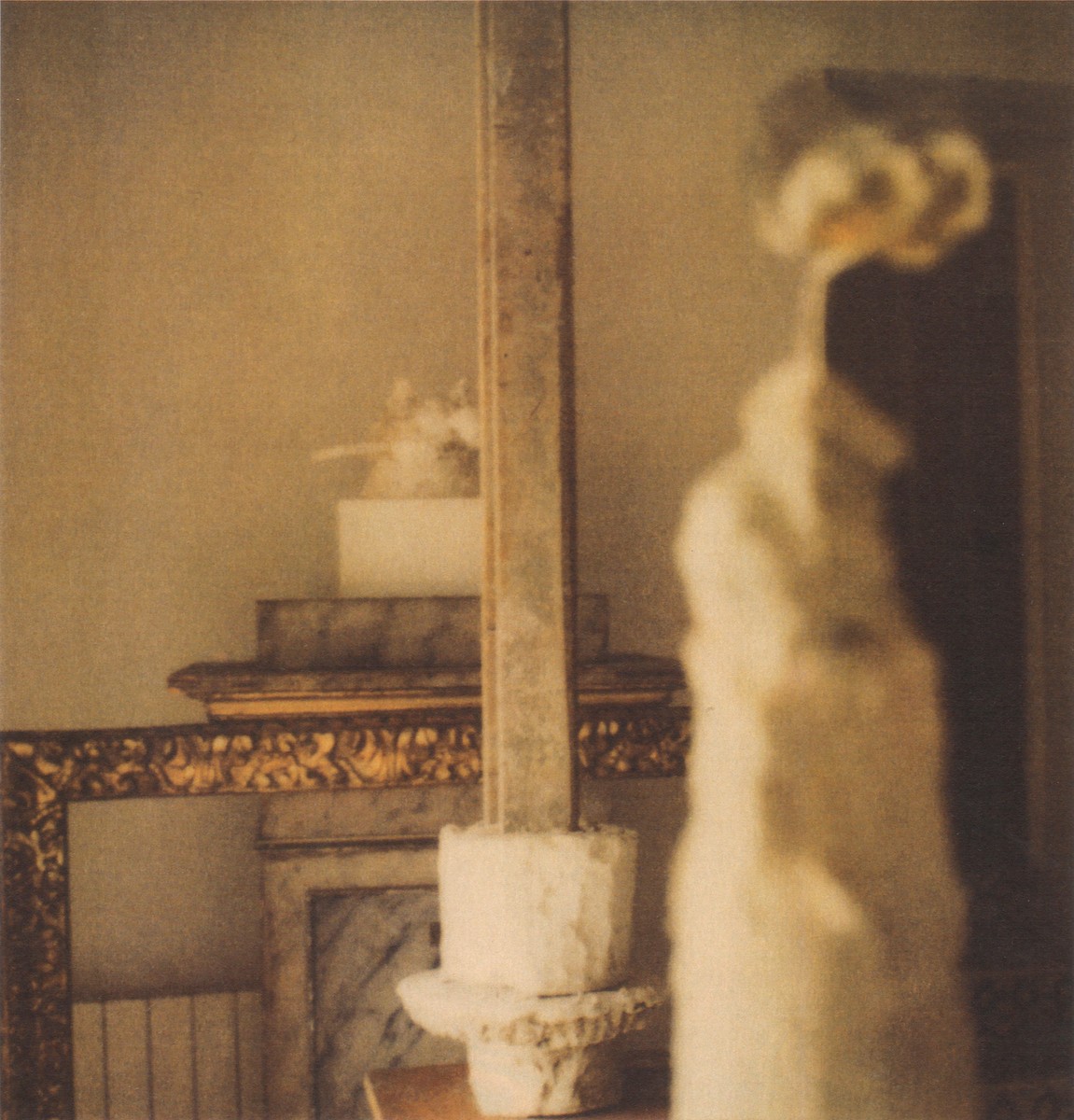
Cy Twombly, Interior, Gaeta, 2002
© Fondazione Nicola Del Roscio
DC – I want to return to that feeling of striving and frustration you mentioned earlier, the wanting to approach an elusive feeling. I imagine part of that frustration of dealing with Twombly as a musician is the tension between the fixity of painting and the innate mobility of music and sound. How does something that is technically fixed and unmoving makes you feel like you want to move?
MM – That's a great question. You know, first of all, for me the gestures that I see on Twombly’s canvas are full of energy. And sometimes I think: “how did he make that gesture? What was the physicality of that like? What was the impulse behind that?” It's really a physical impulse, as opposed to a sonic impulse, that motivates my musical response to begin with. Because the physical impulse leads me to the piano, it naturally has a sound that accompanies it and somewhere in me I know that sound, but it's not as important to me. For me it's really about the physical impulse. Getting back to gesture, and to the physical energy that produces that gesture. What are all the different ways I start to capture the idea of his gestures? I've been experimenting with different ways of doing it. The keyboard is very linear, but if I am thinking of a way of making, say, a circular gesture one idea I might work with is this, a kind of slow permutation of a cloud of harmony:
Myra Melford (example 1)
But I might also like making a bigger, more intense gesture like this:
Myra Melford (example 2)
For me, the physicality of the impulse and the sound of the impulse are so intertwined that I can't really separate them, but they still are two different things. I feel like my relationship with the piano is very kinetic and it's very much about physical movement, as if I were a dancer.
DC – Is there a way in which the musical idiom of jazz, your musical language, is especially suited to a Twombly project?
MM – Well, I think there's something about improvisation that allows me to change things or do things differently in the moment. This allows me to bring the energy that I feel from Twombly’s work into my body, into the piano. I enjoy the freedom that comes with not being locked into a specific way of doing things other than finding the right way in the moment. I think I have always had an innate sense of how to translate a gesture into music. For me the frustrating part of training as a musician was the classical training: learning to read music and learning to notate music. I am at my happiest when I can just immediately find what I'm hearing on the piano and express it in the moment, and that's something that comes and goes. In some ways, I'm better at it now that I have much more technical facility. It's funny, I look back and I think: “how did I even get here?”… but I know it's from the years of practicing, playing, and trying to get the music closer and closer to this feeling that I'm wanting to express.
DC – The Twombly project is extensive and uses various sizes of ensembles: from the trio, to the quintet, to the solo. Given your very personal and visceral relationship to Twombly’s work, why was this not simply a solo project for you?
MM – I know there are things that other musicians can do on their instruments that I can't do in quite the same way on the piano. I want to involve other instruments because that sounds more like what I'm seeing in Twombly. The interaction of my doing something on the piano while someone else does something similar, but in a slightly different language, on their instrument gets at some of the complexity of the drawings and the paintings. Also, at this point in my life I'm very particular about who I play with, and who I ask to play my music. So I already have a sense about who they are, what their vocabulary is, what their musical personality is, whether I feel like they and I have a musical connection. Actually, whether they have a connection with Twombly is really not as important. What's important is that I have a connection with them. When I put this music in front of them, I trust that they'll get to the Twombly through my music or whatever it is that I'm trying to express.
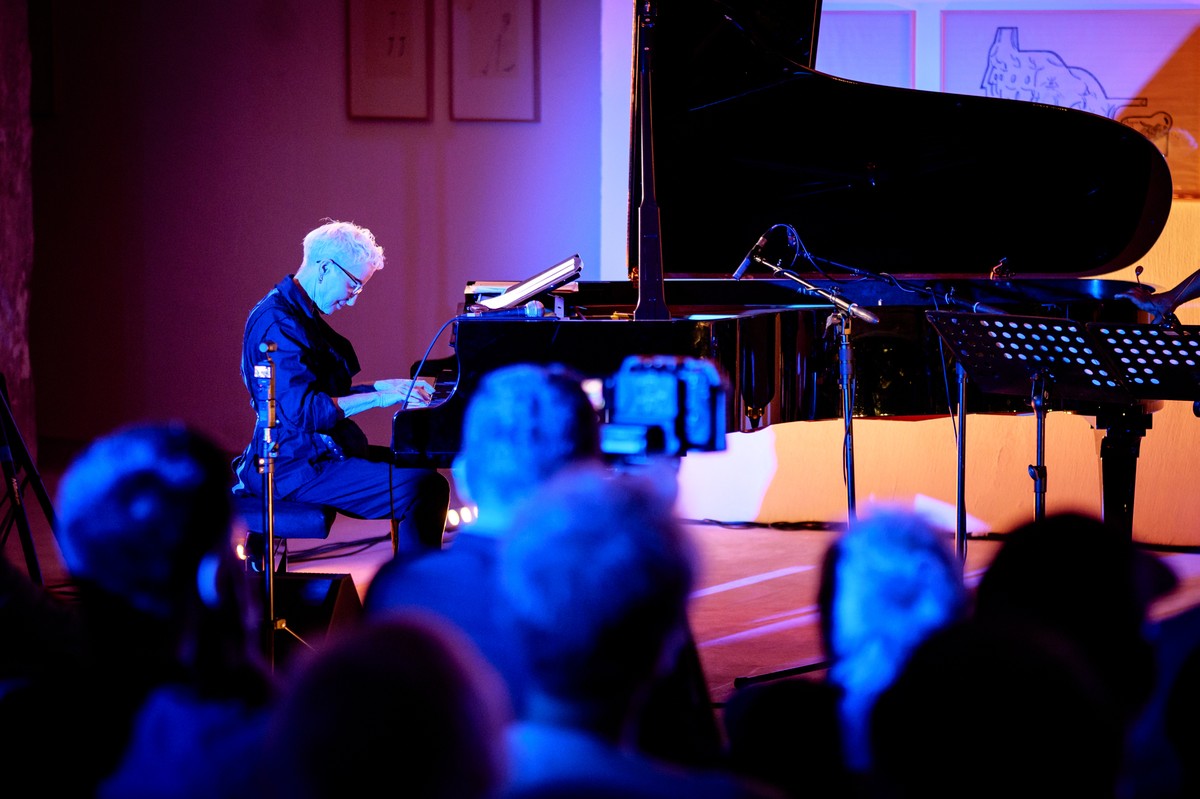
MYRA MELFORD'S SPLASH TRIO with Neil Charles & Ches Smith
Fondazione Nicola Del Roscio, Rome
Ph. Livio Sapio

MYRA MELFORD'S SPLASH TRIO with Neil Charles & Ches Smith
Fondazione Nicola Del Roscio, Rome
Ph. Livio Sapio

MYRA MELFORD'S SPLASH TRIO with Neil Charles & Ches Smith
Fondazione Nicola Del Roscio, Rome
Ph. Livio Sapio
DC – I want to return to the question of the transition from visual to aural. Twombly has such a crucial relationship to writing, and a striking use of bold lines over blank canvas. Ever since Wassily Kandinsky discussed the synesthetic experience of hearing music while painting there is a tendency, perhaps, to associate lines in painting, especially abstract painting, with melodies. Yet the piece you did for the Un/veiled project at Fondazione Nicola Del Roscio in Rome uses a jazz trio, which is made up of the rhythm section (drums, bass, piano). This is traditionally a far less melodic combination than, say, quartets or quintets with saxophones and trumpets. Is there a challenge, when trying to interpret Twombly’s visual language, in using the combination of piano, drums, and bass?
MM – I wanted to challenge a couple of the things you said about the rhythm section, because I really hear each of these instruments as both melodic and rhythmic! They are able to create colors of different kinds, whether it's harmony or chords or something else. Also the drummer is playing vibes [vibraphones, a pitched metal percussion] on a lot of the trio music, so there is more melody there than there would be on the drum set. This attention to melody is key to the work I did with the Splash Trio at the Fondazione Nicola Del Roscio in Rome. One of the pieces that I do there has a series of these looping phrases that start to get stacked on top of one other, and go in and out of phase, and it's somehow like trying to get at the gesture that Twombly does when he's writing a circle across a canvas in Untitled (Bacchus), 2008 or in the many “Chalk” paintings. Sometimes the loop is bigger, sometimes it's smaller. I’m trying to create an aural sensation of that. I can do that with the Splash Trio because the bass player (Michael Formanek) can be playing melodically (plucking as well as bowing his instrument), and the same thing is true for the vibes (played by Ches Smith) and my own playing on the piano.
DC –You said earlier that you are a musician who struggles with putting their work into standard music notation, but of course you must write your music down somehow both for yourself and for other players. How do you that, and what is music writing to you? Might there be any meeting point between the way Cy Twombly rediscovers the act of writing in his art and the way that you have to work around traditional music notation?
MM – The way I write for myself is just this very instinctual shorthand to remember the central ideas, but if I showed them to someone else, they wouldn’t know what the heck it means! It's a combination of notated pitches and words and maybe, letter names for notes. I might, you know, just write out like an A – E – B over C and G. And I'm thinking about that rather than, say, an a-minor or a C-major chord with added colors. I'm not really thinking in terms of functional harmony, and I don't even particularly like chord symbols, which are a big part of the jazz idiom. I guess my music makes sense in terms of chords, if you analyze it. But that's not how I derive them, and that is not how I use them in order to learn how to play a piece. It’s more about color and spacing.
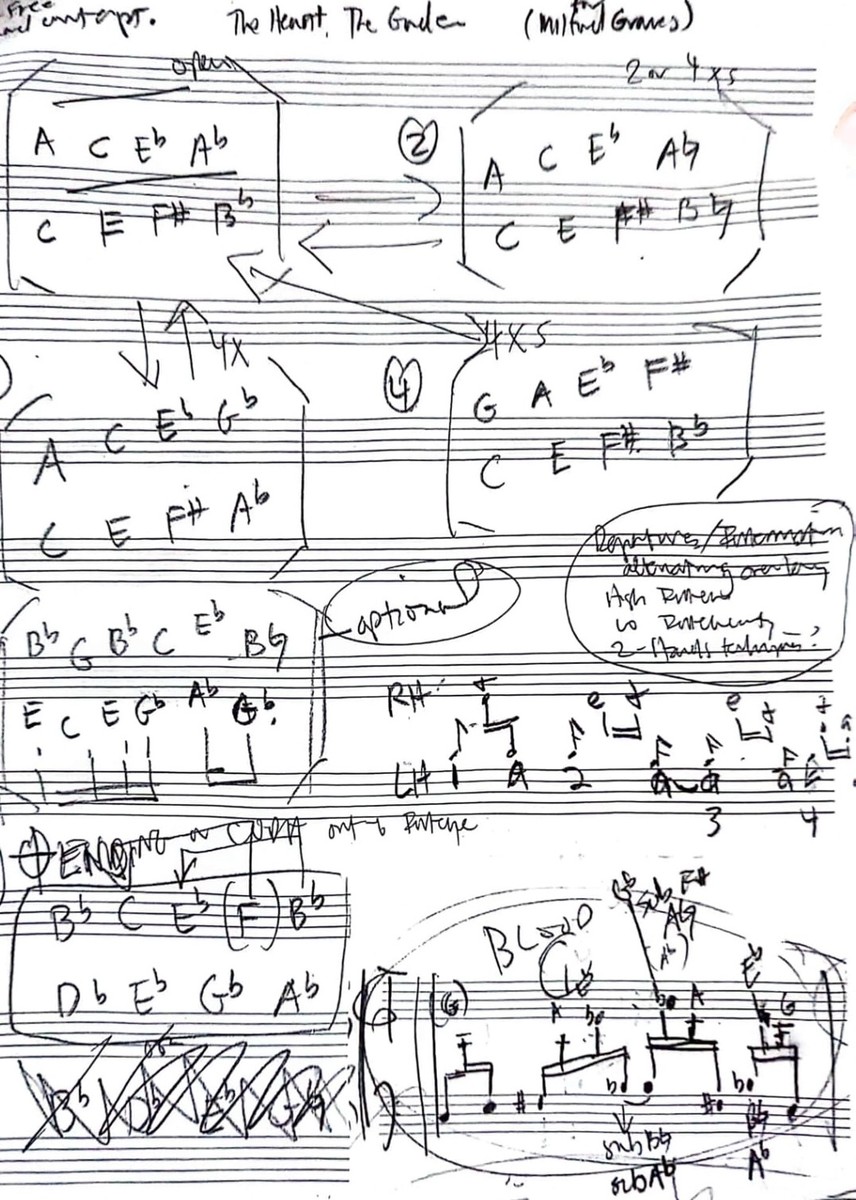
A sample of Myra Melford’s personal musical shorthand
Courtesy the artist
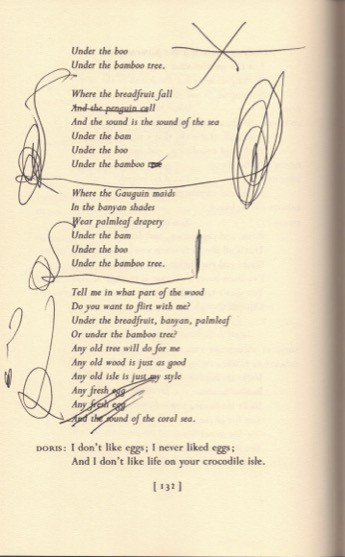
"Fragment of an Agon," Sweeney Agonistes in T.S. Eliot, Collected Poems 1909-1962 (London: Faber & Faber, 1997), 132; copy marked by Cy Twombly
Courtesy Cy Twombly Foundation
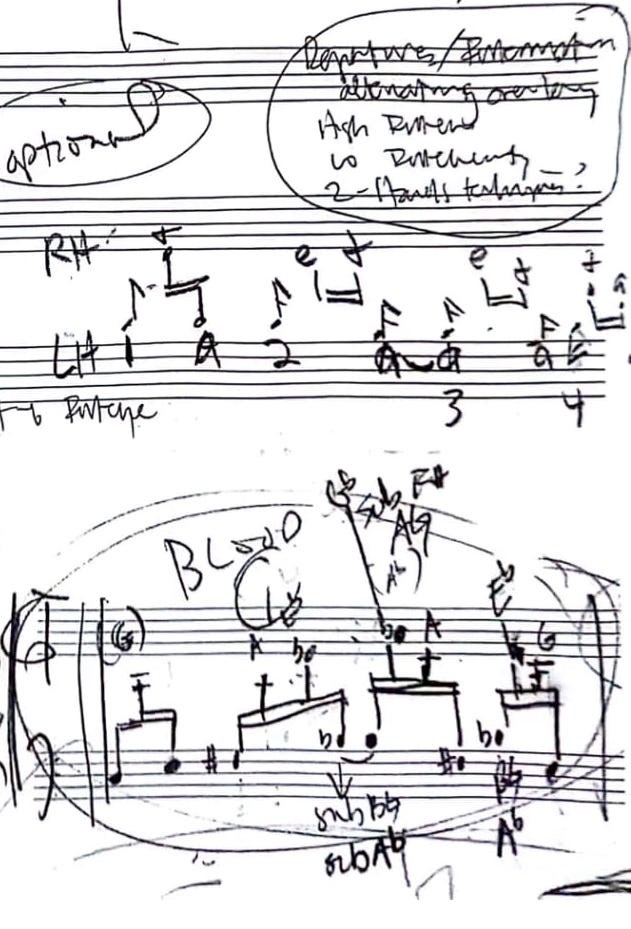
A sample of Myra Melford’s personal musical shorthand (detail)
Courtesy the artist
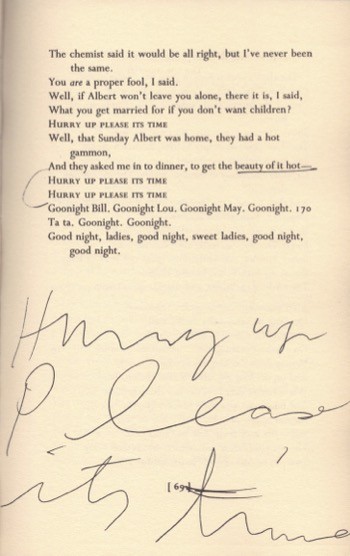
"A Game of Chess," The Waste Land in T.S. Eliot, Collected Poems 1909-1962 (London: Faber & Faber, 1997), 69; copy marked by Cy Twombly
Courtesy Cy Twombly Foundation
DC – It sounds like a reconfiguration of musical writing to me! Lastly, do you hope that your music will guide people into seeing Twombly differently or more deeply?
MM – You know, that's not really my intention. I have performed the work sometimes with projections and I generally don't like to do that because I want the music to speak on its own. I don't want to force people to try to find a connection, but I have gotten the feedback that having something to look at for a long time over the course of say, a ten-minute piece can be really fascinating and it can be a way to start seeing and hearing differently. The sounds you're hearing might lead you to a different part of a painting, lead you to see something differently or notice something you hadn't noticed before. So, maybe in that way, it could do that. But in the end I'm not trying to be programmatic, and I'm not trying to do a literal translation of artwork into sound. I'm really trying to create a space where someone can experience something. And whatever that experience turns out to be is fine with me.
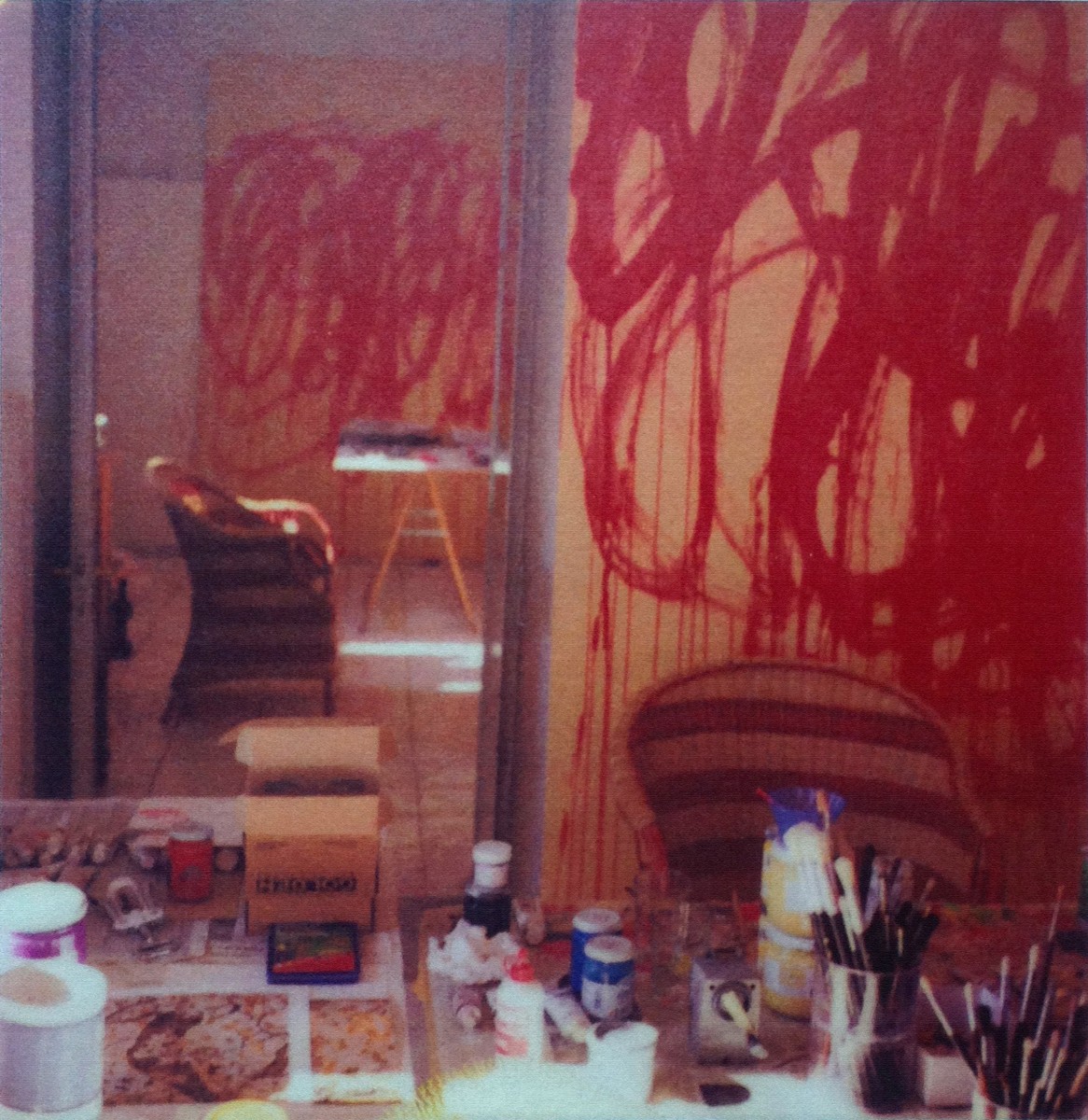
Cy Twombly, Studio Gaeta (with Bacchus Paintings), 2005
© Fondazione Nicola Del Roscio
This interview was conducted in London on a warm and bright afternoon in late July, during Myra’s two-day residency at Café OTO. Myra and I sat in a beautiful, empty university seminar room on the Strand, complete with a piano (on which she played the musical examples in the interview) and a large window overlooking the Thames. During her residency at Café OTO Myra played solo pieces as well as duo, trio and quartet improvisations with special guests John Edwards, Mark Sanders and Chris Batchelor. Her solo pieces for the residency were directly drawn from her Cy Twombly project.
Delia Casadei is a freelance scholar, writer, and translator who works on twentieth century music, sound, and politics. She recently collaborated with the artistic duo Masbedo, and has upcoming projects as a professor for the Open University initiative at the Istituto Franco Serantini in Pisa and as well as a music editor and scholar with Ricordi. She was a professor of musicology at the University of California, Berkeley from 2017-2023. She has published in the Cambridge Opera Journal, the Opera Quarterly, and the Journal of the Royal Musical Association, Representations, and Sound Stage Screen. Her first monograph – Risible: Laughter without Reason and the Reproduction of Sound – came out on February 2024 with the University of California Press.